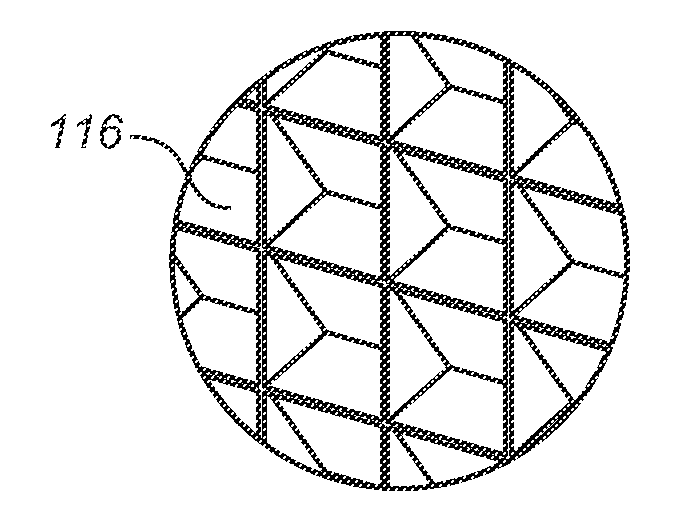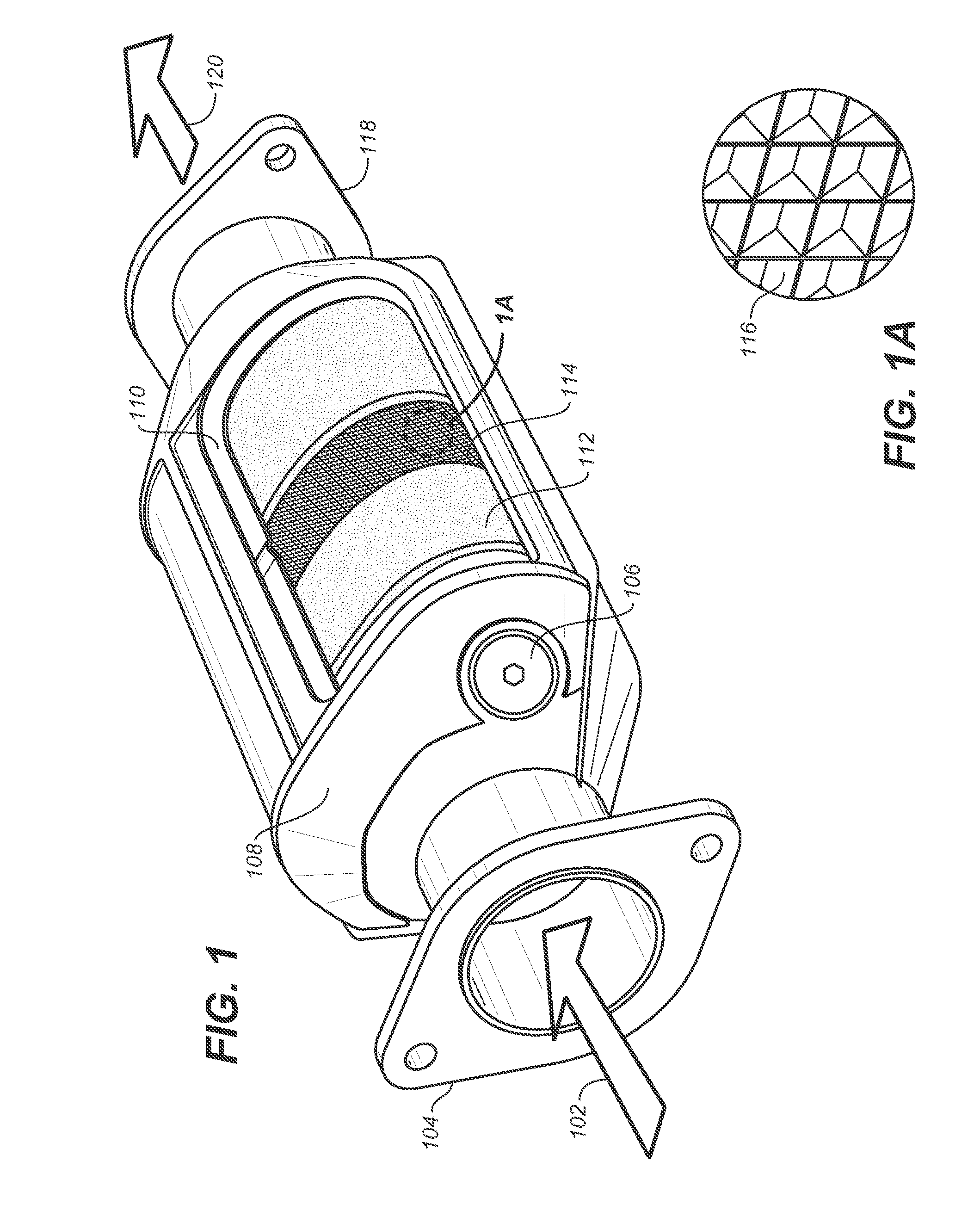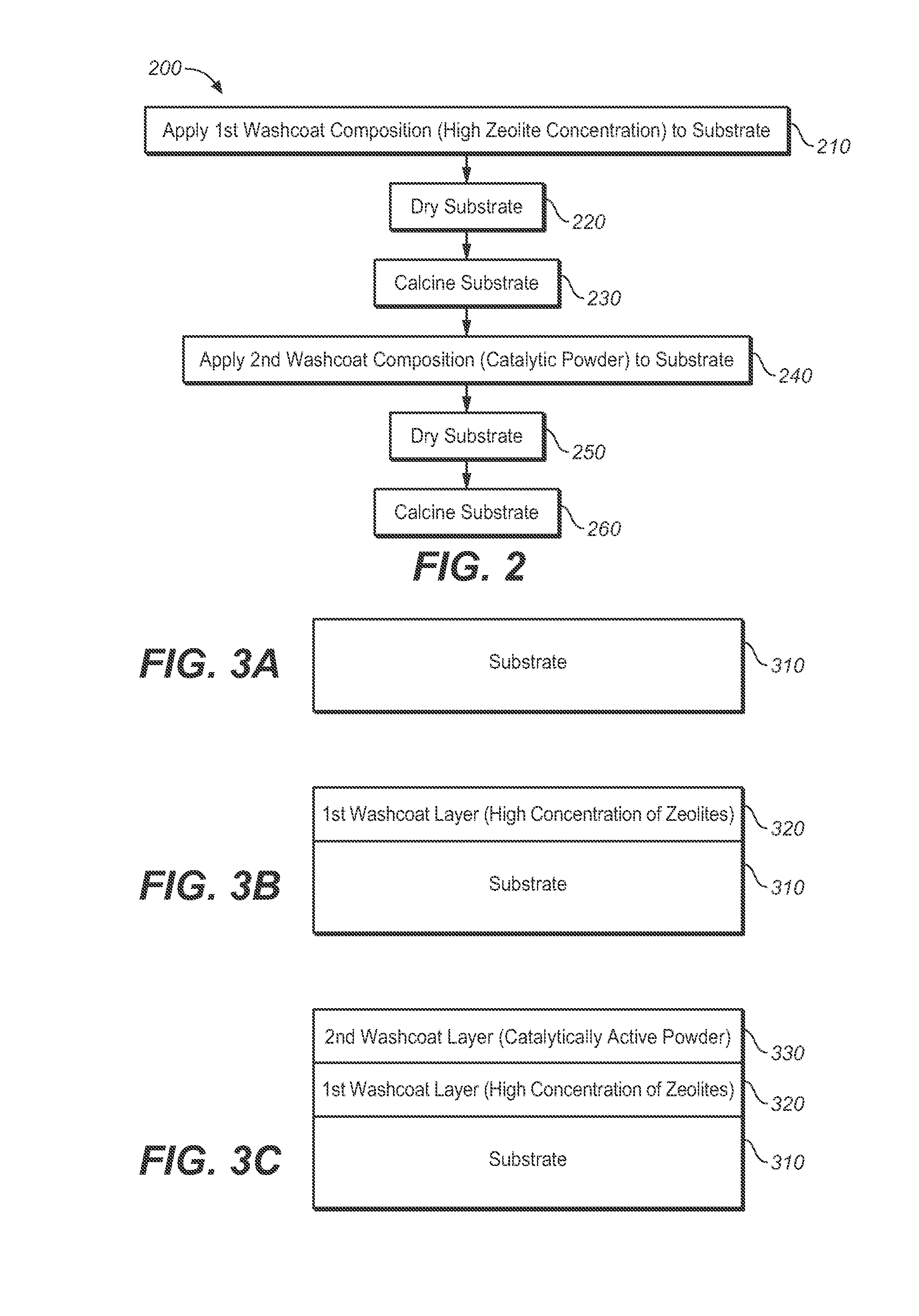Washcoats and coated substrates for catalytic converters and methods of making and using same
a catalytic converter and washcoat technology, applied in the field of catalytic converters, can solve the problems of reducing the efficiency of pgm catalysts, releasing pollutants into the environment, and reducing the efficiency of catalytic converters over time, so as to reduce the emission of one, improve the performance of the emission control system, and reduce light-off temperatures
- Summary
- Abstract
- Description
- Claims
- Application Information
AI Technical Summary
Benefits of technology
Problems solved by technology
Method used
Image
Examples
embodiment 1
[0224]A coated substrate comprising:
a substrate;
a washcoat layer comprising iron-exchanged zeolite particles, and
a washcoat layer comprising catalytically active Nano-on-Nano-on-micro (NNm) particles, the catalytically active Nano-on-Nano-on-micro (NNm) particles comprising composite nanoparticles bonded to micron-sized carrier particles, and the composite nanoparticles comprising a support nanoparticle and a catalytic nanoparticle.
embodiment 2
[0225]The coated substrate of Embodiment 1, wherein the iron-exchanged zeolite particles comprise between about 0.5% and about 15% iron by weight.
embodiment 3
[0226]The coated substrate of Embodiment 1, wherein the iron-exchanged zeolite particles comprise between about 1% and about 10% iron by weight.
PUM
| Property | Measurement | Unit |
|---|---|---|
| diameter | aaaaa | aaaaa |
| diameter | aaaaa | aaaaa |
| diameter | aaaaa | aaaaa |
Abstract
Description
Claims
Application Information
 Login to View More
Login to View More - R&D
- Intellectual Property
- Life Sciences
- Materials
- Tech Scout
- Unparalleled Data Quality
- Higher Quality Content
- 60% Fewer Hallucinations
Browse by: Latest US Patents, China's latest patents, Technical Efficacy Thesaurus, Application Domain, Technology Topic, Popular Technical Reports.
© 2025 PatSnap. All rights reserved.Legal|Privacy policy|Modern Slavery Act Transparency Statement|Sitemap|About US| Contact US: help@patsnap.com



